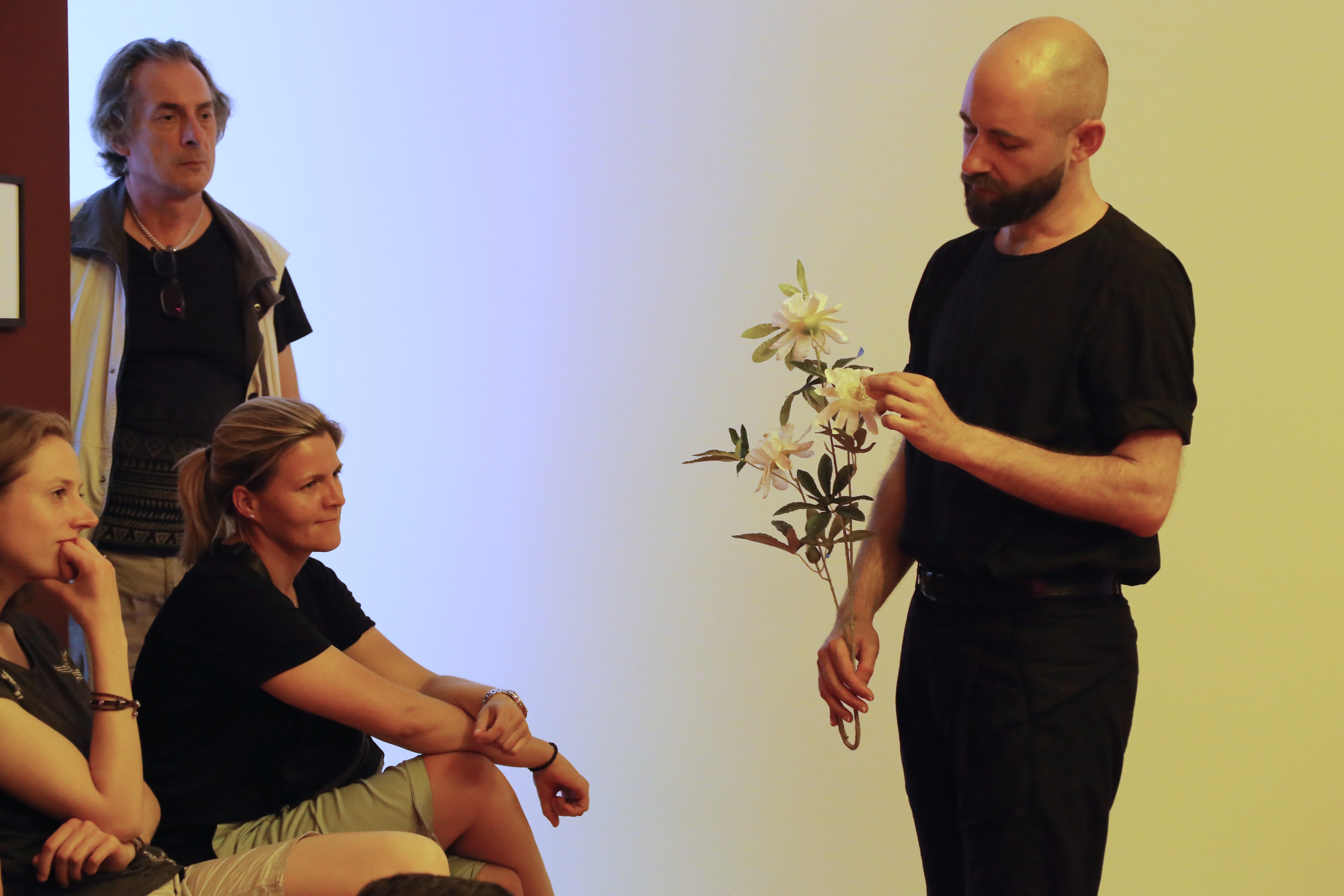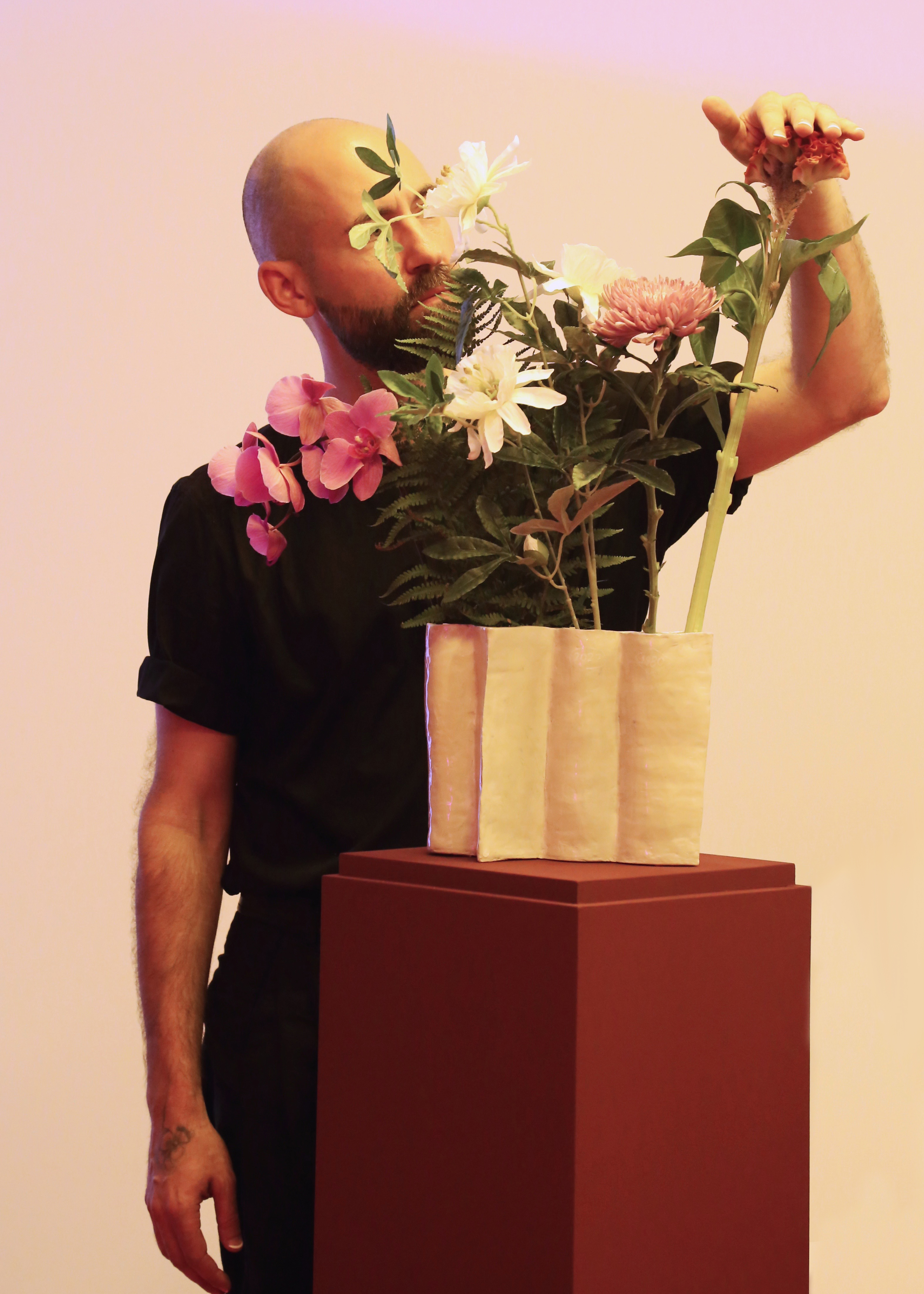The Five Ages
Ceramic vase, fresh and artificial flowers, flower arranging performance, audio, 2017
The artist selects flowers to symbolise five distinct moments in the history of El Dorado, referencing its incarnation as a legendary Berlin nightclub in between the two World Wars, exhibition on gay and lesbian life at the Berlin Museum in 1984, as well as its general application as a legendary, faraway site of utopian longing.
The flowers stand in a ceramic vase designed and produced specially for them by the artist. The vase provides each flower with its own distinct opening, while arranging the flowers to interact contrapuntally, creating a bouquet of colliding and overlapping temporalities. An audio tour accompanies the artwork, in which the artist recounts an idiosyncratic history of Berlin while preparing and arranging flowers in the vase. Cultural histories of orchids, ferns, chysanthemums, coxcombs, and a speculative poppy-passionflower hybrid are told with references to Otto Dix paintings, the writing of Monique Wittig, the Institute for Sexual Science, and a party drug that is said to cause florogenital transformations.
The Five Ages was commissioned by Ashkan Sepahvand as part of the Odarodle exhibition at Berlin's Schwules Museum in 2017. The bouquet was refreshed weekly by florist Takayuki Tomita, who selected seasonal flowers in response to the five ages represented by the vase.




Photos by Alex Giegold